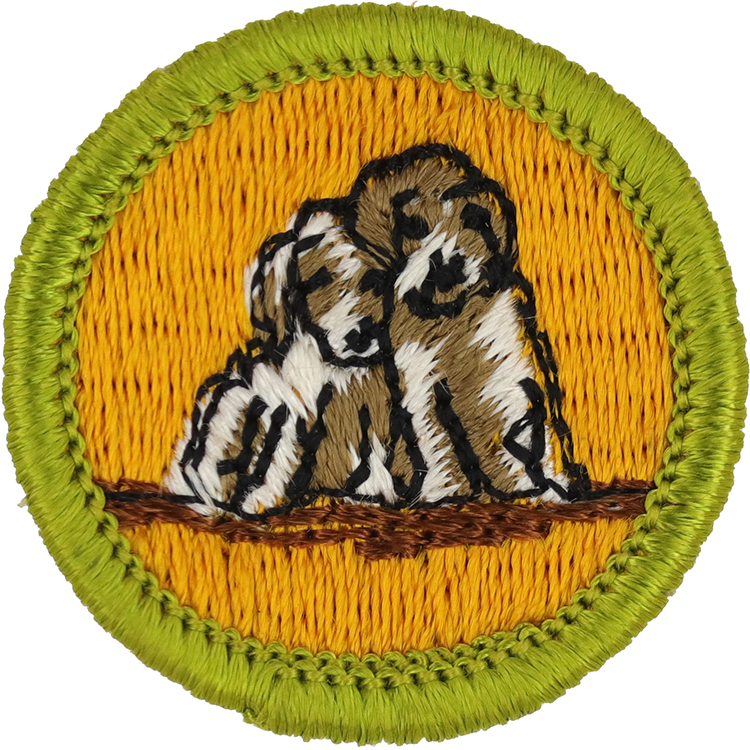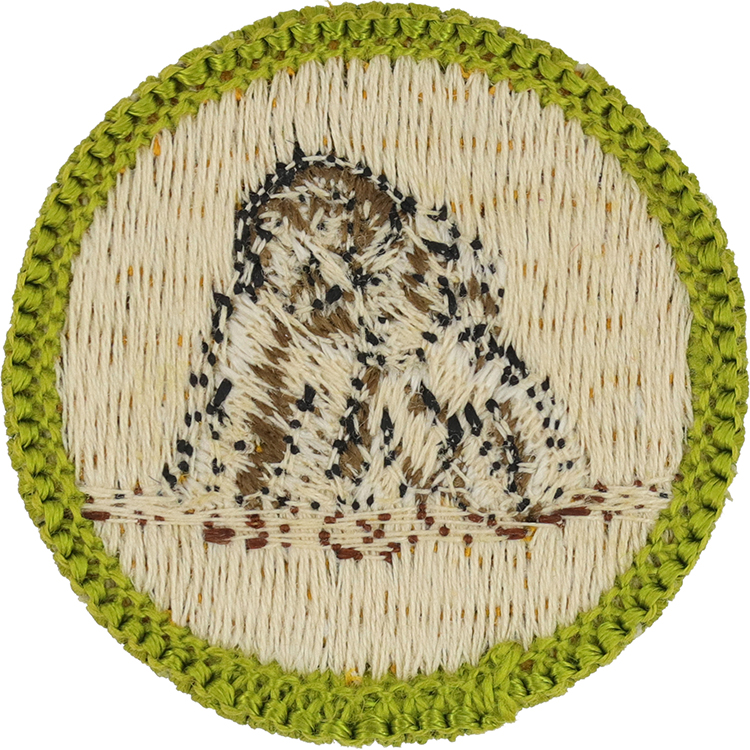
Fig. 1: DogCar-G-Front
- Embroidery: Cotton thread
- Border: Merrowed

Fig. 2: DogCar-G-Reverse
- Back: Starched cloth
Item Name: Dog Care 1969 - 1972
Item ID: DogCar-G
Collector Rating: 1
Requirements January 1969 until June 1972
1. Describe from personal observation, or point out from pictures, some of the distinguishing characteristics of 10 breeds of dogs; OR give a brief history of some one breed of dog, including the origin if possible.
2. Point out on a dog (or on a sketch) at least 10 parts, giving the correct name of each.
3. Present a statement signed by a parent or guardian describing the care you have given your dog (or a dog under your supervision) during a period of at least two months. Include these items: feeding schedule, kinds of food used, housing, exercising, grooming, and bathing. State what has been done to keep the dog alert and healthy.
4. Present a written report showing the approximate cost of feeding and caring for your dog for a period of at least two months.
5. Explain in general the proper method used in obedience training. Demonstrate, if possible, with your dog, at least three of these commands: "Come", "Sit", "Down" (lie down), "Heel" (walk closely at owner's left side), "Stay" (remain in position); "Take it", "Drop it", "Get it" as used in retrieving work.
6. Do at least TWO of the following:
(a) Describe what should be done to remove fleas, ticks, and lice from your dog.
(b) Describe the symptoms of the following and explain what you would do if your dog showed these symptoms: distemper, rabies, mange, ringworm.
(c) Describe the proper treatment for: sore ear, sore eye, fits, removing an object swallowed by a dog, removing an object stuck in its throat.
(d) Explain first aid treatment for a dog bite and list the items needed in every dog owner's first aid kit.
7. Explain precautions to take in handling an injured dog; demonstrate how to apply an emergency safety muzzle. Explain how to treat wounds, including use of the tourniquet. Show how to apply simple dressing and bandage to the foot, body, or head. Explain what action to take when a dog is struck by an automobile.
8. State the dangers of home treatment of a serious ailment when the services of a veterinarian are available and report on a visit to a veterinary hospital; OR report on a visit to a shelter of your local humane society of ASPCA, if available.
9. Know the laws and ordinances involving dogs, including ownership, registration, control, and humane treatment, in force in your own community.


